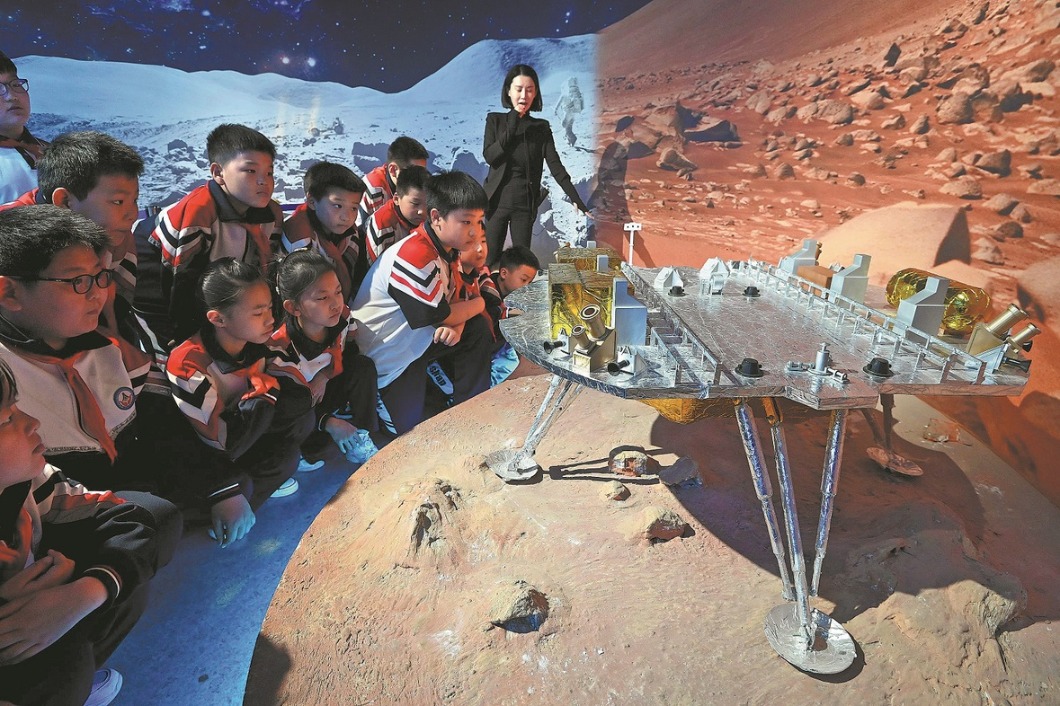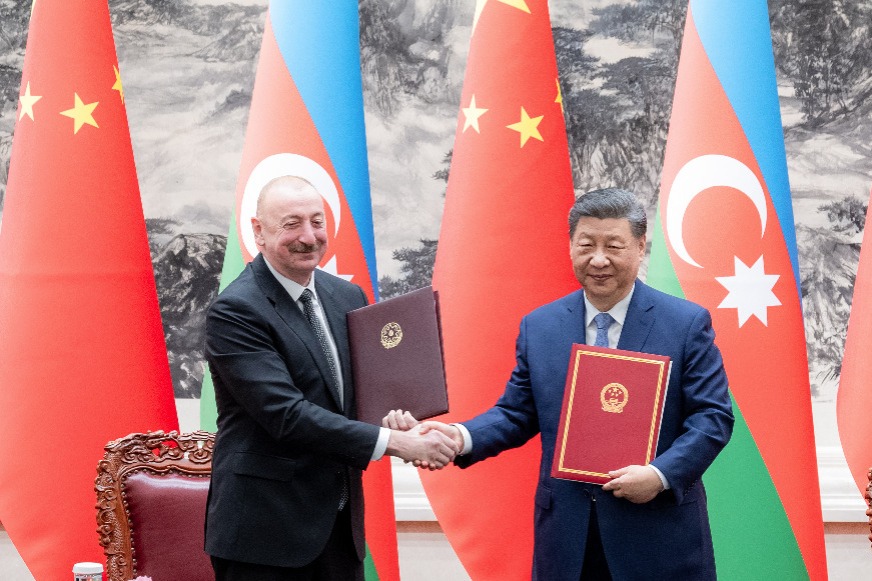China opens lunar samples for research

China has opened access to its lunar samples to foreign researchers to promote international cooperation and lunar studies.
At a grand ceremony in Shanghai on Thursday to mark the country's 10th Space Day, the China National Space Administration announced the results of international applications for borrowing Chang'e 5 lunar samples.
The selected parties are seven universities and institutes from six countries — the Institut de Physique du Globe de Paris of France, University of Cologne in Germany, Osaka University of Japan, Pakistan's Space and Upper Atmosphere Research Commission, The Open University in the United Kingdom, as well as the United States' Brown University and Stony Brook University.
The administration signed agreements with representatives from the foreign bodies at the ceremony.
The CNSA began accepting international applications for borrowing Chang'e 5 samples in November 2023. By the deadline at the end of 2023, it had received 24 applications from 11 countries and international organizations that requested 71 sets of samples.
After the submission process, the administration organized experts to review the applications in accordance with the Lunar Samples Management Guidelines and the Detailed Rules for International Cooperation on Lunar Samples and Scientific Data, which have been published by the Chinese government, and selected the seven organizations.
CNSA Administrator Shan Zhongde said at the ceremony that, "Chang'e (samples) belong not only to China but also to the world, representing a shared treasure for all humanity".
He said that China's lunar exploration endeavor has always adhered to the principles of equality, mutual benefit, peaceful utilization, and win-win cooperation, and the nation always shares its lunar research achievements with the international community.
"We will continue accepting international applications for lunar samples and look forward to global scientists making further discoveries to expand human knowledge and benefit all mankind," the official said.
One of the world's most notable space activities in 2020, the Chang'e 5 robotic mission was launched on Nov 24 that year at the Wenchang Space Launch Center in South China's Hainan province and successfully landed on the moon on Dec 1 that year. It was the world's third spacecraft to touch down on the lunar surface in the 21st century after its two Chinese predecessors — Chang'e 3 and 4.
The landmark mission returned 1,731 grams of lunar rocks and soil to Earth on Dec 17, achieving a historic accomplishment about 44 years after the last lunar substances were brought back from our nearest celestial neighbor.
The 23-day mission was one of China's most sophisticated and challenging space endeavors, and made China the third country to retrieve materials from the moon, after the US and the former Soviet Union.
- China ready to work with other countries to uphold international trade rules, fairness, justice: Xi
- China, Kenya elevate ties as Xi, Ruto hold talks
- China has 6.8 million translation professionals: report
- Experts call for building maritime community with a shared future
- China invites foreign participation to the Tianwen 3 Mars-sampling adventure
- China chooses 10 international projects for its Chang'e 8 lunar mission





































